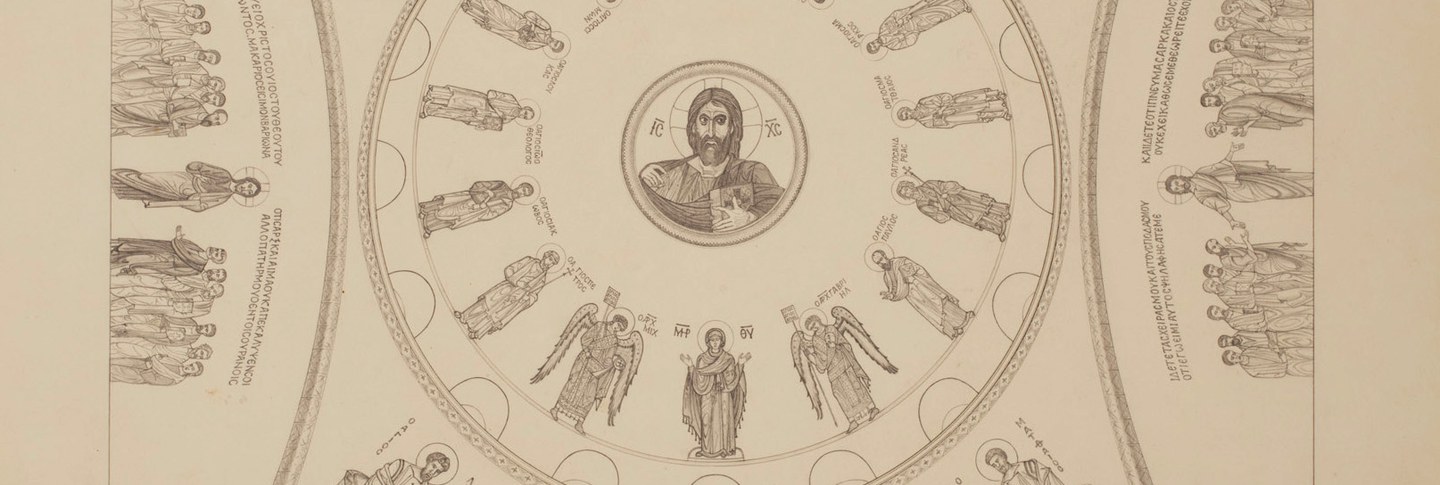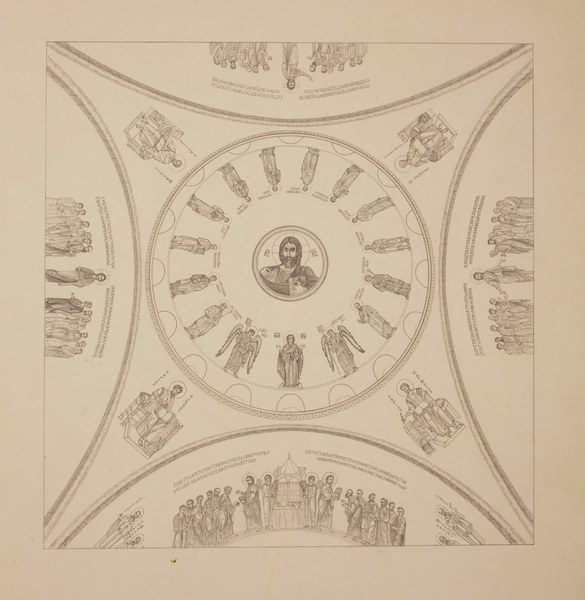Beginning in 1941, Dumbarton Oaks has hosted an annual symposium for each of its three fields of study (Byzantine, Pre-Columbian, and Garden and Landscape) at which leading specialists unite to present their work on a single topic. In 1948, the focus of the symposium was the Constantinopolitan Church of the Holy Apostles, which was leveled by the Ottomans in 1461. The topic emerged from a joint project begun in 1945 by the professors in residence at Dumbarton Oaks. They sought to reconstruct the monument using literary sources and surviving buildings and their interior ornamentation that possibly had been modeled after the lost Holy Apostles church.
Seeking to build a comprehensive reconstruction of the monument, the Dumbarton Oaks symposium, organized by Albert Mathias Friend Jr. and presided over by Sirarpie Der Nersessian, brought together leading Byzantinists with different specializations. Glanville Downey focused on texts discussing the Church of the Holy Apostles, particularly the work of Constantine the Rhodian and Nicholas Mesarites. Paul A. Underwood studied architectural features and reconstructed possible plans and elevations. Milton V. Anastos worked on the theological aspects of the monument, concentrating on Justinian I’s restoration of the church in the sixth century. Guiding much of the project, Friend had acquired copies of necessary manuscripts for the scholars in addition to photographs of mosaics and wall paintings that might offer evidence supporting their work. He gave two lectures on the reconstruction of the lost mosaic cycle, and Der Nersessian gave two lectures on church mosaics of the period. With each individual providing his own expertise, the project was the fruit of much collaborative labor. Byzantine art historian Kurt Weitzmann summarized the symposium: “It was a very unified program, demonstrating how Friend had been able to get every scholar at Dumbarton Oaks involved in his project.”

The structure of this interdisciplinary study roughly followed the model of the 1946 symposium on the Church of Hagia Sophia, which in turn used a collaborative research methodology put in place by Wilhelm Koehler, senior fellow in charge of studies at Dumbarton Oaks between 1941 and 1944 (see posts on Koehler and the Research Archives). Indeed, Friend admitted that the synergetic work on the Holy Apostles church was “not so much an innovation as an attempt to bring into focus what was inherent in Dumbarton Oaks.” Hoping to release a multi-volume publication on the Holy Apostles, the speakers intended to continue work on the project after the symposium was over. However, the scholars’ commitments to other projects and Friend’s illness and eventual death prevented this work from coming to fruition, although the meticulously assembled documents for the symposium remained in the Dumbarton Oaks Image Collections and Fieldwork Archives. Sixty-seven years later, the Byzantine Studies program again took up the topic of the Church of the Holy Apostles for its annual symposium, held April 24–26, 2015, with Margaret Mullett and Robert Ousterhout as symposiarchs. Materials from the early collaboration were made available in an exhibit in the Orientation Gallery and online to coincide with the 2015 symposium.

